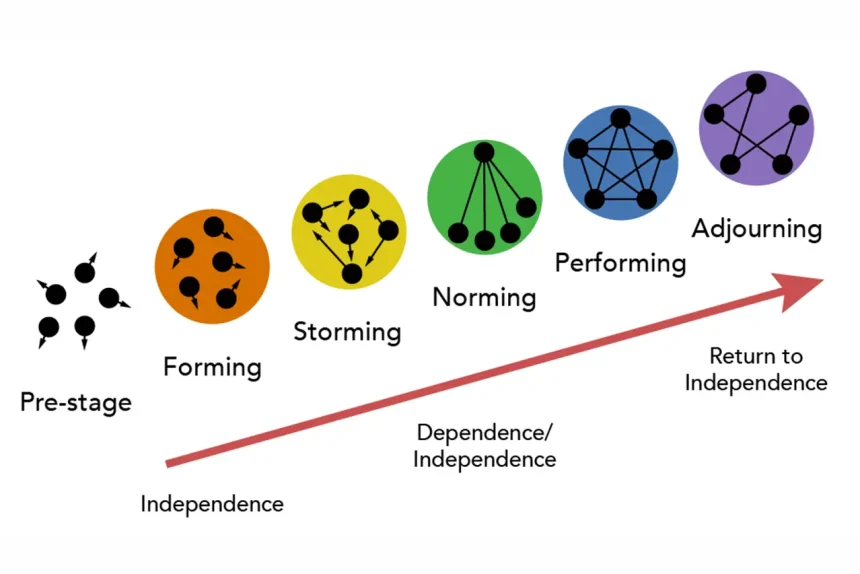Understanding the stages of group development, as outlined by Bruce Tuckman, is crucial for NBCOT® exam prep students. These stages—forming, storming, norming, performing, and adjourning—apply to all teams and are essential for success in group therapy scenarios.
Query 1: Stages of Group Development
Group development stages are pivotal in understanding team dynamics. Mastering these stages, from forming to adjourning, enhances team effectiveness and prepares you for real-world application in therapy settings.
1. Forming
This initial stage denotes orientation and the beginning of team dynamics. Members are polite and positive, learning the group structure and expectations.
- Key Element: Familiarity with each other and the task.
- Role of the Leader: Provide direction and guidance.
- Example: The Avengers assembling for a common purpose.
2. Storming
The storming stage involves power struggles and conflicts as team roles are solidified. This stage addresses leadership and authority questions critical for group cohesion.
- Key Element: Challenging leadership and norms.
- Role of the Leader: Coaching through confrontations.
- Example: The Avengers navigating conflicts.
Query 3: 5 Stages of Group Development
3. Norming
During norming, cooperation and integration flourish. This stage is about open communication and trust, fundamental for productive group therapy.
- Key Element: Developing trust and mutual respect.
- Role of the Leader: Facilitate and encourage initiative.
- Example: The Avengers working synergistically.
Query 6: Norming Stage of Group Development
4. Performing
In the performing stage, synergy and goal achievement are at their peak. Teams develop interdependency and resolve conflicts effectively.
- Key Element: Cohesive unit functioning.
- Role of the Leader: Delegate tasks and adapt.
- Example: Final battle coordination in The Avengers.
Query 9: Five Stages of Group Development
5. Reforming / Transforming (Adjourning)
The adjourning stage signifies the end of the group’s journey. It’s a time for reflection on achievements and preparation for future endeavors.
- Key Element: Reflection and evaluation.
- Role of the Leader: Recognition of team efforts.
- Example: The Avengers’ farewell moments.
Understanding these stages is crucial for tackling group therapy challenges in the NBCOT® exam. Engage with each stage deeply, using real-world examples like The Avengers to relate concepts to practice.
Want detailed practice tips to ace the NBCOT® exam? Join now for full access!
What are the five stages of group development according to Bruce Tuckman?
The five stages are Forming, Storming, Norming, Performing, and Adjourning. These stages help understand team dynamics and enhance effectiveness in group therapy settings.
How does the 'Forming' stage impact team dynamics?
In the Forming stage, team members become acquainted with each other and the tasks at hand. Politeness and positivity characterize this phase, with leaders providing direction and guidance. This stage is crucial for setting team expectations.
Why is the 'Storming' stage important in group development?
The Storming stage involves navigating power struggles and conflicts, which solidify team roles and address leadership questions. It’s vital for achieving group cohesion and moving the team towards a more effective functioning state.
What characterizes the 'Norming' stage of group development?
The Norming stage focuses on cooperation and integration. Teams build trust and mutual respect, enabling open communication and productivity in therapy situations. Leaders facilitate and encourage team initiative during this stage.
Why is understanding these stages crucial for the NBCOT exam?
Mastering the stages of group development is essential for tackling group therapy scenarios in the NBCOT exam. Understanding each phase allows students to apply real-world examples and enhance their therapy practice skills.



